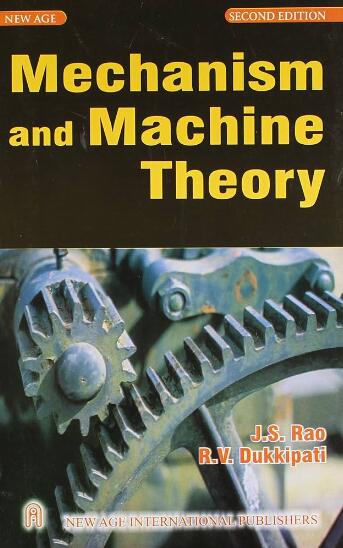Position and velocity analyses of the tripod joint with aspherical rollers
IF 4.5
1区 工程技术
Q1 ENGINEERING, MECHANICAL
引用次数: 0
Abstract
The paper addresses the kinematics of a type of tripod joint that has seen application over the past two decades in the automotive industry, due to its anti-shudder features. The joint encompasses three rollers externally delimited by axisymmetric non-spherical surfaces. The rollers run on tracks machined on one of the connected shafts. Each roller has a cylindrical inner surface that is in contact, theoretically along a circle, with the spherical ending of a trunnion extending from the other shaft. The paper solves for the first time in polynomial form the position analysis of this type of joint. Then, after pointing out that a tripod joint does not have an instantaneous transmission ratio, the paper addresses the first-order kinematics of the joint. As a further original result, the paper demonstrates that the analyzed tripod joint, when connected in series to a ball non-plunging constant velocity joint, gives rise to a three-shaft driveline which is strictly homokinetic if the axes of the terminal shafts are parallel. Numerical examples show application to case studies of the procedures proposed to solve the position and velocity analyses.
带非球面滚子的三脚架关节的位置和速度分析
本文解决了一种类型的三脚架关节的运动学,已经看到了应用在过去的二十年中,在汽车行业,由于其防抖功能。该关节包括三个滚子,外部由轴对称非球面划分。滚子在连接轴上加工的轨道上运行。每个滚子都有一个圆柱形的内表面,理论上沿一个圆与从另一个轴伸出的耳轴的球形末端接触。本文首次以多项式形式求解了这类关节的位置分析。然后,在指出三脚架关节不具有瞬时传动比后,本文讨论了关节的一阶运动学。作为进一步的原始结果,本文证明了所分析的三脚架关节,当串联到一个球非俯冲等速关节时,产生一个三轴传动系,如果末端轴的轴线平行,则该传动系是严格同动的。数值算例显示了所提出的求解位置和速度分析的程序在实例研究中的应用。
本文章由计算机程序翻译,如有差异,请以英文原文为准。
求助全文
约1分钟内获得全文
求助全文
来源期刊

Mechanism and Machine Theory
工程技术-工程:机械
CiteScore
9.90
自引率
23.10%
发文量
450
审稿时长
20 days
期刊介绍:
Mechanism and Machine Theory provides a medium of communication between engineers and scientists engaged in research and development within the fields of knowledge embraced by IFToMM, the International Federation for the Promotion of Mechanism and Machine Science, therefore affiliated with IFToMM as its official research journal.
The main topics are:
Design Theory and Methodology;
Haptics and Human-Machine-Interfaces;
Robotics, Mechatronics and Micro-Machines;
Mechanisms, Mechanical Transmissions and Machines;
Kinematics, Dynamics, and Control of Mechanical Systems;
Applications to Bioengineering and Molecular Chemistry
 求助内容:
求助内容: 应助结果提醒方式:
应助结果提醒方式:


